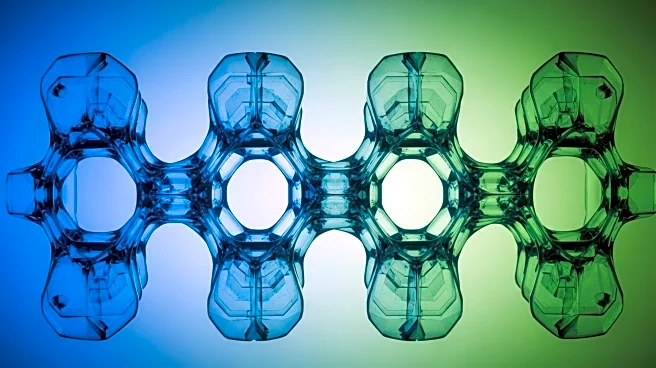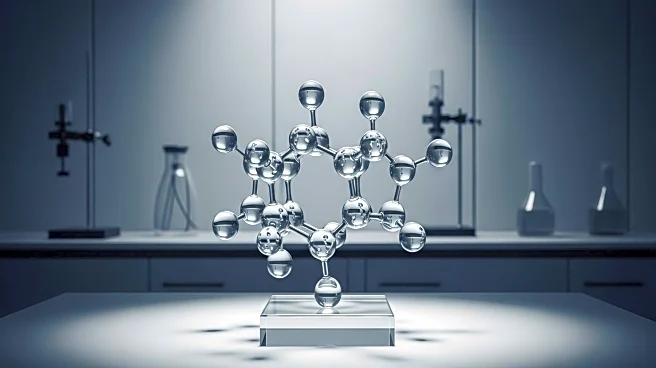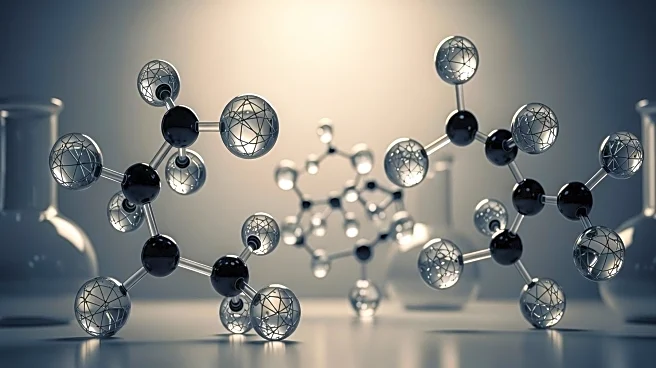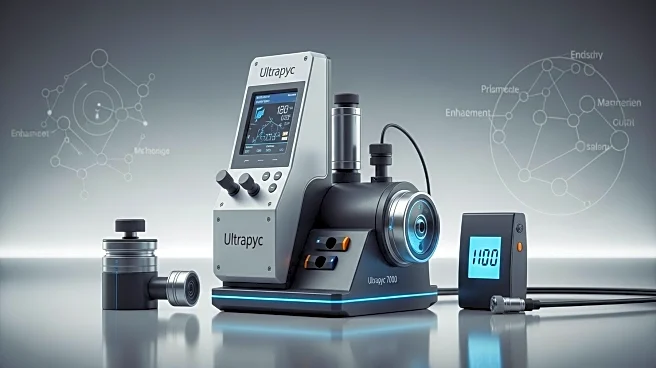What's Happening?
Recent studies have demonstrated that highly fluorinated, non-porous crystalline materials, specifically silver(I) perfluorocarboxylate compounds (AgCPs), exhibit selective CO2 uptake through a gated mechanism. This process involves a structural change from non-porous to guest-containing structures, allowing CO2 to be adsorbed while CH4 is not. The uptake is influenced by the length of perfluorocarboxylate chains, which form interdigitated layers within the crystals. The research highlights the potential for these materials to separate CO2 from CH4, a significant advancement in gas separation technology.
Why It's Important?
The ability to selectively adsorb CO2 over CH4 has significant implications for industries focused on gas separation and environmental management. This discovery could lead to more efficient methods for capturing and storing CO2, a critical component in addressing climate change. The materials' unique properties offer a new approach to gas separation, potentially reducing costs and improving the efficiency of industrial processes. The findings also contribute to the understanding of molecular interactions in fluorinated materials, which could inform the development of new materials with tailored adsorption properties.
What's Next?
Further research is expected to explore the scalability and practical applications of these materials in industrial settings. Scientists may investigate the potential for these materials to be used in large-scale CO2 capture and storage systems. Additionally, the study of the molecular interactions within these materials could lead to the development of new compounds with enhanced gas separation capabilities. Collaboration between researchers and industry stakeholders will be crucial in translating these findings into real-world applications.
Beyond the Headlines
The study of these materials offers insights into the fundamental interactions between fluorinated compounds and gases, which could have broader implications for material science and chemistry. Understanding these interactions may lead to innovations in other areas, such as drug delivery systems or the development of new polymers. The research also highlights the importance of interdisciplinary approaches in solving complex environmental challenges, combining expertise in chemistry, materials science, and environmental engineering.












